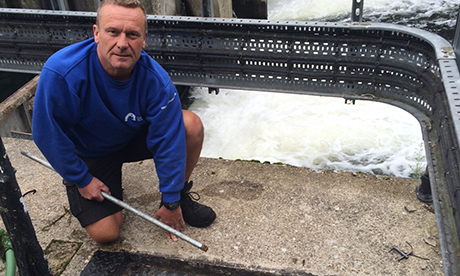Eel passes help endangered fish complete final leg of 3,000 km odyssey
Embattled eels will soon be able to swim upstream without getting stuck as refurbishments of the Lea River’s eel passes get underway.
In its lifetime the European eel must undertake an arduous 3,000km odyssey, travelling on ocean currents from the deep blue waters of the Sargasso Sea to rivers and estuaries and back again.
They reach coastal areas as juvenile glass eels and migrate up rivers and streams to mature but are often blocked by man-made river defences such as as dams, weirs and lock gates.
To help the eels along their way, steel tunnels around five metres long, known as eel or elver (baby eel) passes, provide passageways for the tube-shaped fish to travel upstream unhindered.
The passes are lined with brushes and have water pumped through to help the eels climb through the tunnels.
The Canal and River Trust in partnership with the Zoological Society of London and the Environment Agency are turning the water pump engines from solar power to electric, to make the passes easier to control.
European eels have been decreasing in numbers since the 1970s. Numbers have picked up in recent years but the species is still listed as ‘critically endangered’.
Chantal Dave, ecologist for the Canal & River Trust, said improving the eel pass can “make a real difference”. She said: “Eels are synonymous with the East End, albeit in their jellied form rather than for journeying thousands of miles and setting up home in our waterways.
“Every eel on the River Lea will have made this amazing journey, they’ll then live here for about 40 years, before returning to the Sargasso.”


